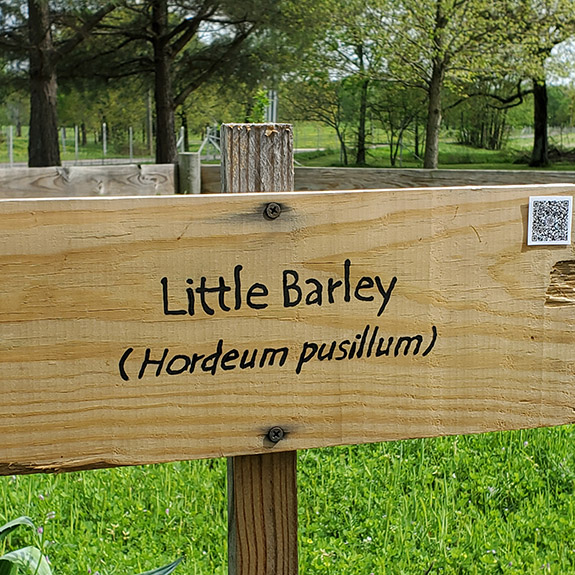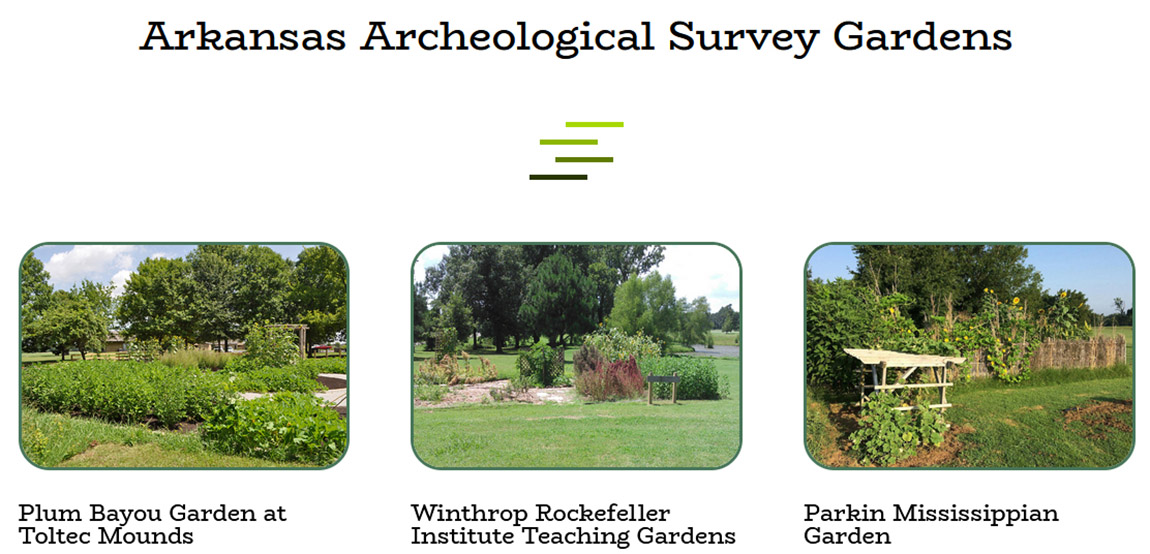
The Arkansas Archeological Survey has updated its “Gathering, Gardening, and Agriculture“ website with a new layout and additional content. This website is designed for both teachers and other people interested in learning about the history of plant use in Arkansas and the methods archeologists use to study past plant use. New features include webpages for each of the Arkansas Archeological Survey Native Gardens and photographs and descriptions of historically important plants.
 Arkansas Archeological Survey personnel Jodi Barnes, Emily Beahm, Elizabeth Horton, and George Sabo originally created “Gathering, Gardening, & Agriculture. Plant-based Foodways in the Southeastern United States: A Fifth Grade Curriculum” in 2017. This curriculum was partially inspired by the Native Gardens of the Arkansas Archeological Survey that are located at the Plum Bayou Mounds State Park, Parkin State Park and Winthrop Rockefeller Institute Research stations. The goal of this curriculum is to make it easy for teachers to incorporate archeological content into their classes in a way that is relevant to their required Common Core Standards. This curriculum is aligned with Arkansas Department of Education Social Studies Curriculum Framework, and addresses each of the four primary strands (government and civics, economy, geography, and history) along with many of the associated rubrics. A simple website was created at this time as well, as a way to make the curriculum virtually accessible in pdf form.
Arkansas Archeological Survey personnel Jodi Barnes, Emily Beahm, Elizabeth Horton, and George Sabo originally created “Gathering, Gardening, & Agriculture. Plant-based Foodways in the Southeastern United States: A Fifth Grade Curriculum” in 2017. This curriculum was partially inspired by the Native Gardens of the Arkansas Archeological Survey that are located at the Plum Bayou Mounds State Park, Parkin State Park and Winthrop Rockefeller Institute Research stations. The goal of this curriculum is to make it easy for teachers to incorporate archeological content into their classes in a way that is relevant to their required Common Core Standards. This curriculum is aligned with Arkansas Department of Education Social Studies Curriculum Framework, and addresses each of the four primary strands (government and civics, economy, geography, and history) along with many of the associated rubrics. A simple website was created at this time as well, as a way to make the curriculum virtually accessible in pdf form.
The revised “Gathering, Gardening, and Agriculture” (GGA) website continues to be a resource for teachers interested in using our 5th grade social studies curriculum in their classes. The new “Gathering, Gardening, and Agriculture” website is also intended to be a companion for the Survey’s Native Gardens at the Toltec Station, Parkin Station, and the Research Station at the Winthrop Rockefeller Institute. The added “Gardens” section includes photographs and information about the plants used by Indigenous people who lived in what is now Arkansas. The plants in the Survey’s Native Gardens are featured on the GGA website with photographs, descriptions, and references. A QR code placed on plant labels will allow visitors to retrieve the part of the website that describes the plant on their smart phone while visiting these gardens.



